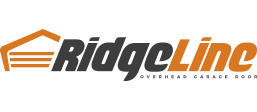Garage doors that are not maintained regularly can become noisy and inconvenient to operate. Considering that the garage door is one of your home’s most significant moving parts, you must be serious about its maintenance practices.
There are lots of maintenance practices that a garage door needs. Lubrication is often overlooked despite being so crucial for the moving components.
This post from the experienced team at Ridgeline Overhead Garage Door will discuss why your garage door needs lubrication, the frequency required for this maintenance practice, and the best procedure to follow when lubricating your garage door.
What is garage door lubrication, and why is it important?
For garage doors, lubrication is the process of applying a substance such as a grease or oil to the moving components to reduce friction and related problems such as wear and tear. With good lubrication, the garage door’s components and the entire structure functions without producing any noise and ensure a smooth and peaceful garage access experience.
The garage door lubrication frequency
As a general rule, you should lubricate all your garage door’s moving parts every six months. However, if you live in an area with harsh conditions, such as near the beach, you should lubricate your garage door more frequently. Additionally, if your garage door is noisy, you should lubricate it immediately, focusing on the squeaky components.
Choosing a lubricant for your garage door
Garage door lubrication’s success and effectiveness depend on the quality of the lubricant you acquire and its suitability for your lubrication needs.
Preferred lubricants:
Silicone sprays and white Lithium grease. The latter adheres to metal well and is easier to apply by hand. Silicone sprays come in handy when you want to get lubricants into small spaces. These two lubricants are preferred for garage doors because they are non-corrosive, highly resistant to outdoor elements, and, most importantly, don’t attract dirt and dust.
Lubricants to avoid:
Mechanic’s grease, standard degreaser specifically WD-40, and engine oil. These products are highly prone to the buildup of dust and dirt and hence may bring other problems in the course of lubrication. Note that most of these products are cleansers and not necessarily lubricants.
The process of lubricating your garage door
Although the lubrication process may differ depending on your garage door configuration, these are the basic steps to follow:
Close the garage door and turn off the opener’s power if your garage door is automated.
*Lubricate the garage door’s moving components in this order:
Tracks: Clean your tracks with a damp cloth to remove dirt, grime, and debris. You can use automotive grease cleaner to loosen the grime if it’s stubborn, then wipe it off. Although you don’t need to lubricate your garage door tracks (which may make it harder for the rollers to move and the opener to work smoothly), frequent cleaning ensures the door’s proper functioning at all times.
Hinges: Open the door manually and lubricate the hinges and the section to meet the track’s bend (pivot points). If there are plastic hinges, you should not lubricate them, as the lubricating products can cause this material to break down over time.
Rollers: Lubricate the rollers in their entirety, including the ball bearings inside each of them. If you apply excess lubricant, please wipe it after lubricating all the rollers to avoid balancing problems. Excess lubricant may also drip on your car or mess the garage door floor area and hence should not be left unattended. Here, it would be best if you avoided lubricating nylon rollers.
Springs: Use a ladder to climb up your garage door in its closed position and lubricate the springs and the bearing plates that lift your garage every time you press that open button on your remote controller. Please only apply enough lubricant as excess may cause the same mess as above.
Locks: For a smooth manual garage door locking experience, you should lubricate the locks too. Ensure that your lubricant gets to the tumbler, the keyhole, and other moving parts of the lock.
Chains rail- round up your lubrication process by greasing the top rail where the chain rides in. there is no need to lubricate the chain as it naturally has a lubricant.
*The distribution step
Once all your garage door components are sufficiently and correctly lubricated, you should lift them each at a time for several rounds to ensure that the lubricant is adequately spread on the mechanism. For the components that affect the entire door’s movement, you may need to close and open it several times to achieve the same.
Conclusion
Don’t let friction cause wear and tear to crucial garage door components such as the hinges and the rolling track and potentially cost you a significant amount to replace them. Lubricate them regularly to save yourself from this costly hustle, silence the door’s operation, and extend its lifespan. The above lubrication practices should work for any garage door design as no door can operate without moving parts.
Please remember to go for high-quality and effective lubricants from reputable garage accessories shops, such as Ridgeline Overhead Garage Door, as this is the only way you will be guaranteed extended lubrication and smooth operation of your garage door.

